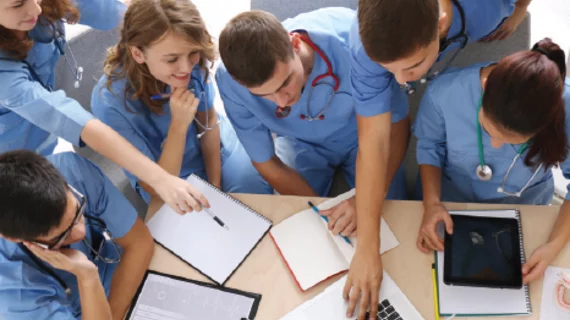Internal symposium for breast imaging technologists is a hit among attendees
Offering breast imaging technologists opportunities to obtain their continuing education needs can expand their current understanding of advances in breast cancer screening, detection and treatment and benefit imaging departments as a whole.
This was the experience at one institution that began offering an annual breast imaging symposium in 2014. The symposium’s educational content was specific to technologists, advanced practice practitioners and nurses and met CME requirements specific to each field. This, the authors of a new paper published in the Journal of the American College of Radiology explained, can assist breast imaging technologists in obtaining their required CMEs while also keeping them up to date on the latest advancements in their field.
“Radiologic technologists report lack of employer support and poor staffing levels as barriers to continued education,” corresponding author of the paper Mitva J. Patel, MD, from the Department of Radiology at Ohio State University, and co-authors wrote. “On-site, free continuing education with the required credits creates the opportunity to maintain certification and improves team building and efficiency. This provides a source of employee satisfaction and may lead to retention which is critical in times of technologist shortage and understaffing.”
The institution formed a planning committee that met monthly starting around nine months before the event. The committee was composed of individuals that reflected the symposium's target audience—breast imaging managers, radiologic technologists and oncology clinical nurse specialists. Throughout the year, they planned the topic presentations, recruited speakers from within the organization, sought approval for their continuing educational materials and marketed the event.
The authors report that the symposium’s attendance has been high throughout the years, with technologists accounting for 55% of attendees. What’s more, the event has garnered overwhelmingly positive praise from its attendees, according to their responses to the post-event questionnaires they completed. Of those who have completed the survey, 100% agreed that they would recommend the symposium to others who are looking to expand their knowledge of breast imaging. The majority of respondents reported feeling like they left the event with a better comprehension of the subject and also felt more comfortable explaining the latest tests and procedures to their patients.
The authors cited numerous benefits their institution has observed as a result of the symposium, including free high-quality CMEs, increasing knowledge of advancements in breast imaging to those directly involved in examinations and reinforcing technologists’ vital role on a patient care team.
“Reducing barriers to and facilitating technologists’ continuing education can improve credentialing compliance, employee satisfaction, clinical quality, and everyday patient interactions. In our experience, technologists overwhelmingly appreciate the high value content a local symposium has to offer,” the authors concluded.
Learn more about the symposium here.

